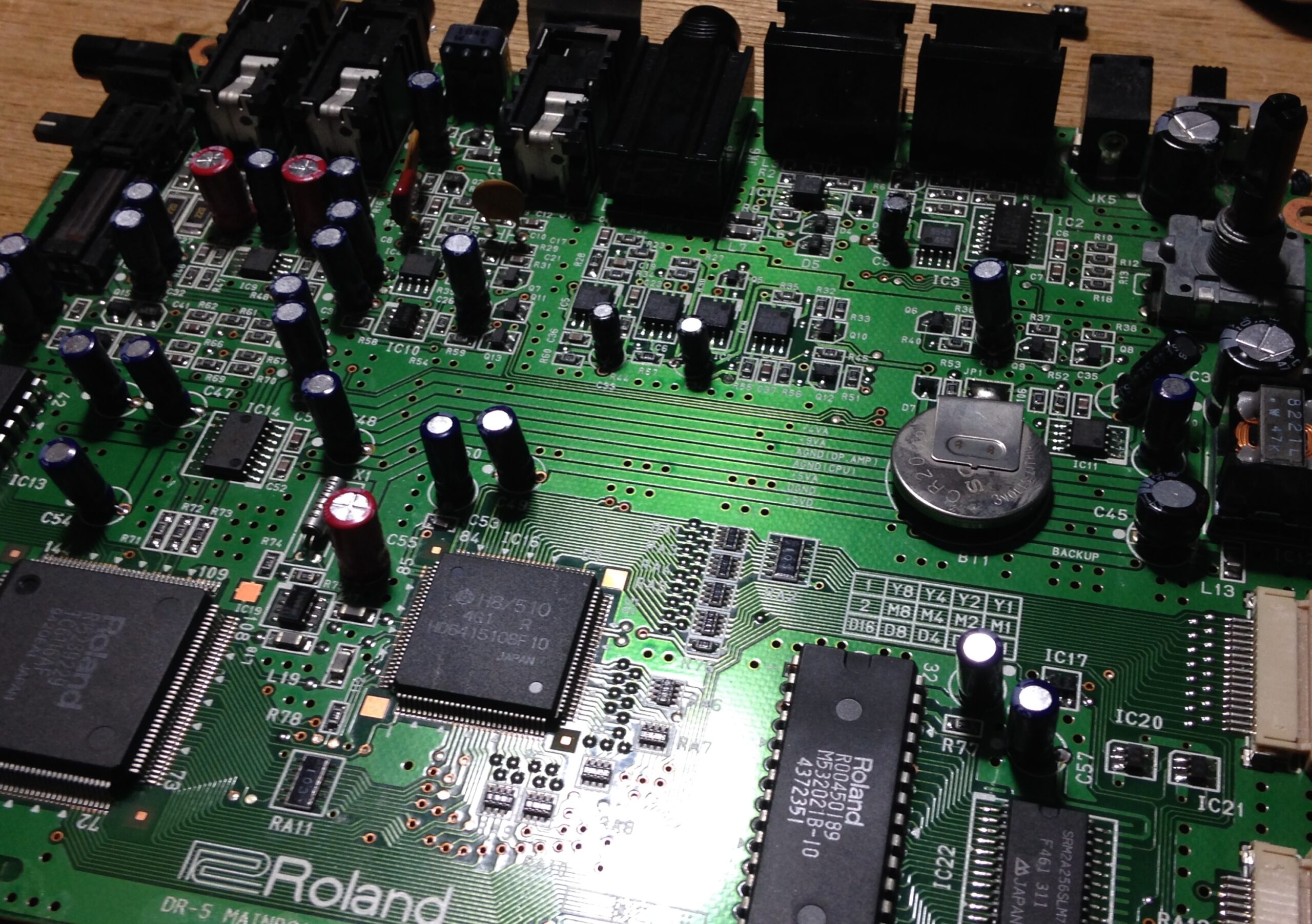
ReCapping an Old Drum Machine Boss DR-5 Experiment
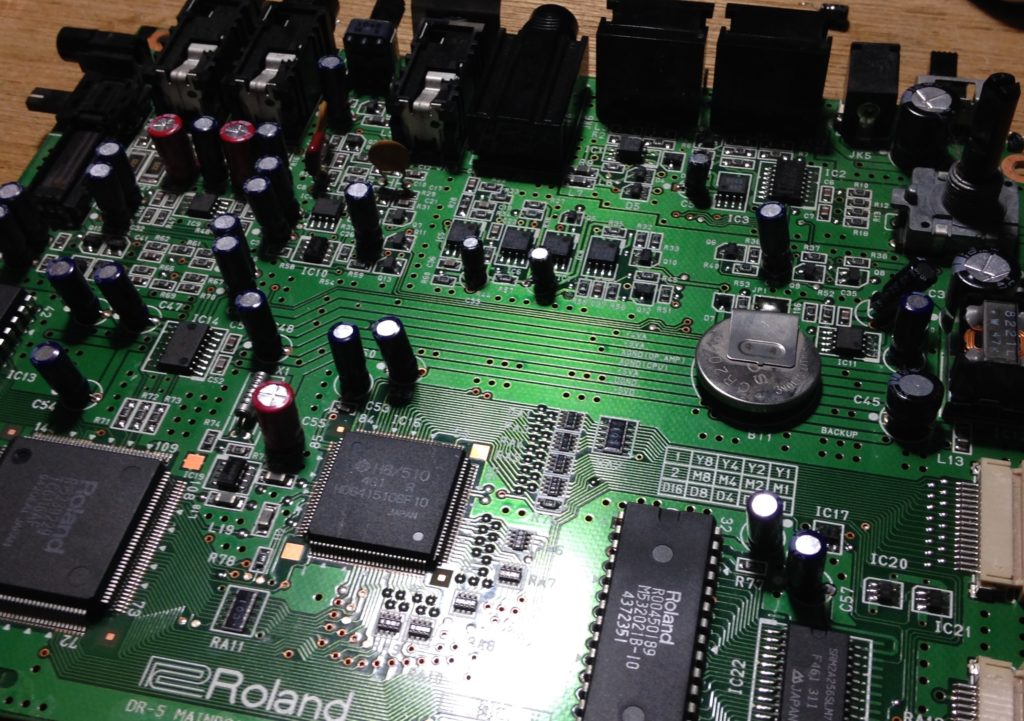
The DR-5
The Boss DR-5 has been around the block and is still a notorious machine for those who dare to learn it.
Those that do take the time get rewarded with a machine that has the same capabilities if not more, than a modern day unit costing 10x as much.
The Boss DR-5 boast midi control, 4 tracks of audio and not like todays polyphony lacking machines, you can program your full drum kit on track one, bass on two, chords on three, and melody on four.
There is just one problem, with age comes age.
The machine like a lot of other machines from the era just sound like shit. They have a heavy hum, or hiss, crackle, low output, etc. the years of sitting in closets and basements in boxes have not been kind.
As a simple experiment Dove Beach took this machine under it’s wing, along with a full breakdown and clean. All capacitors were replaced (with the exception of the main power caps). The change was eye opening. Once the DR-5 was plugged back in, it was almost as if it was given a second chance at life.
**Please see the comment below by Silo adding the list of needed caps from the service manual.**
The hits, stabs and instruments sound clear as day with no background hum and hiss. I have to say the operation was a success!
Time to bring these units back to life.
Next up Boss DR-202 and Roland MC-303 for a Nquab Re-cap.
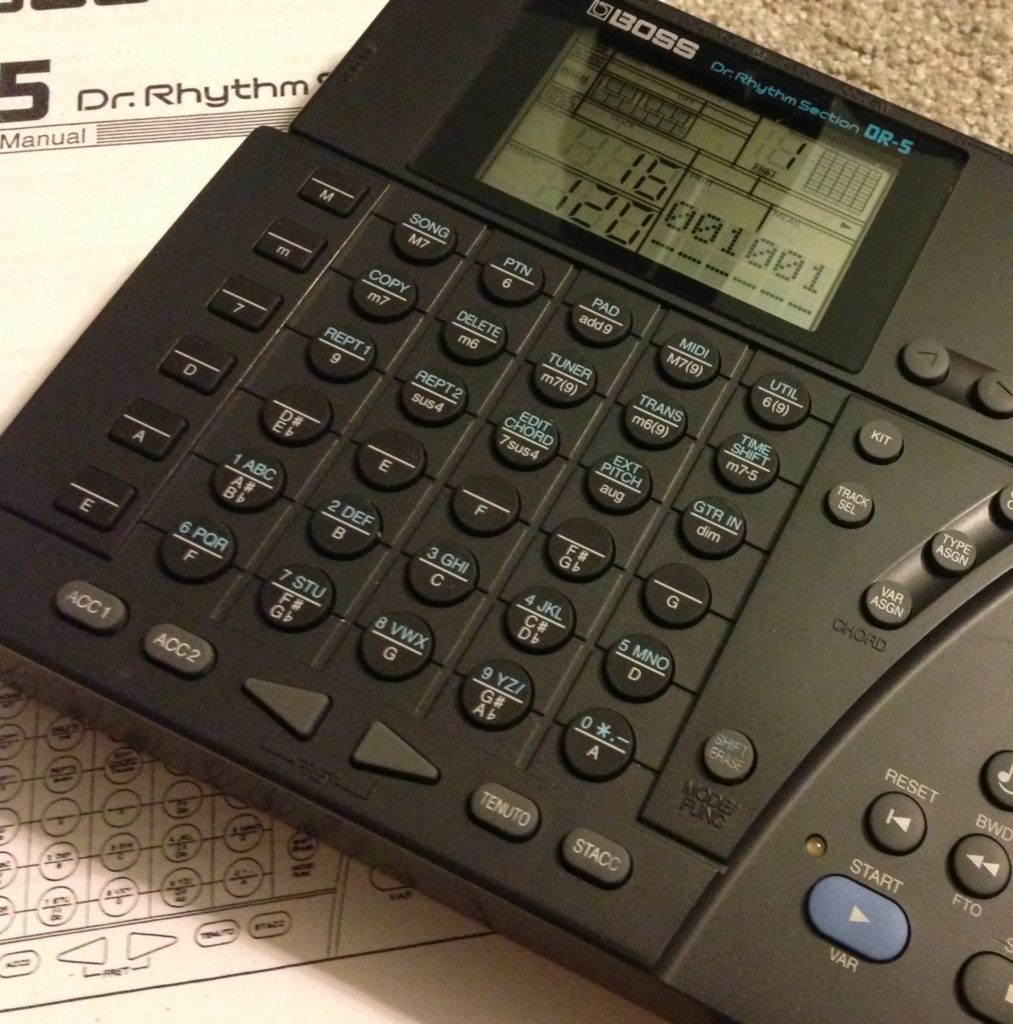
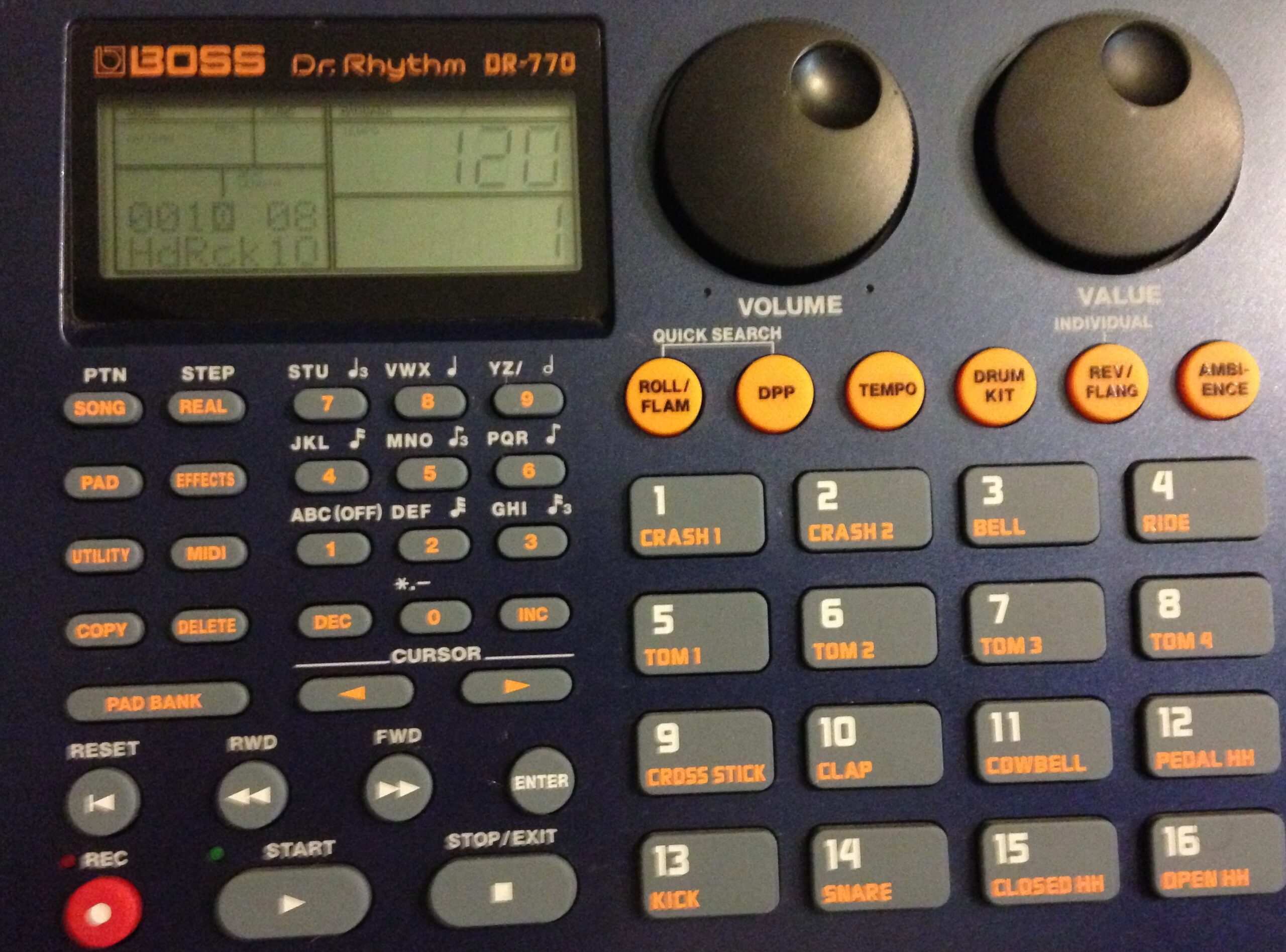
DR-770 Replacement Battery DIY

PS3 Grill Mod
You May Also Like
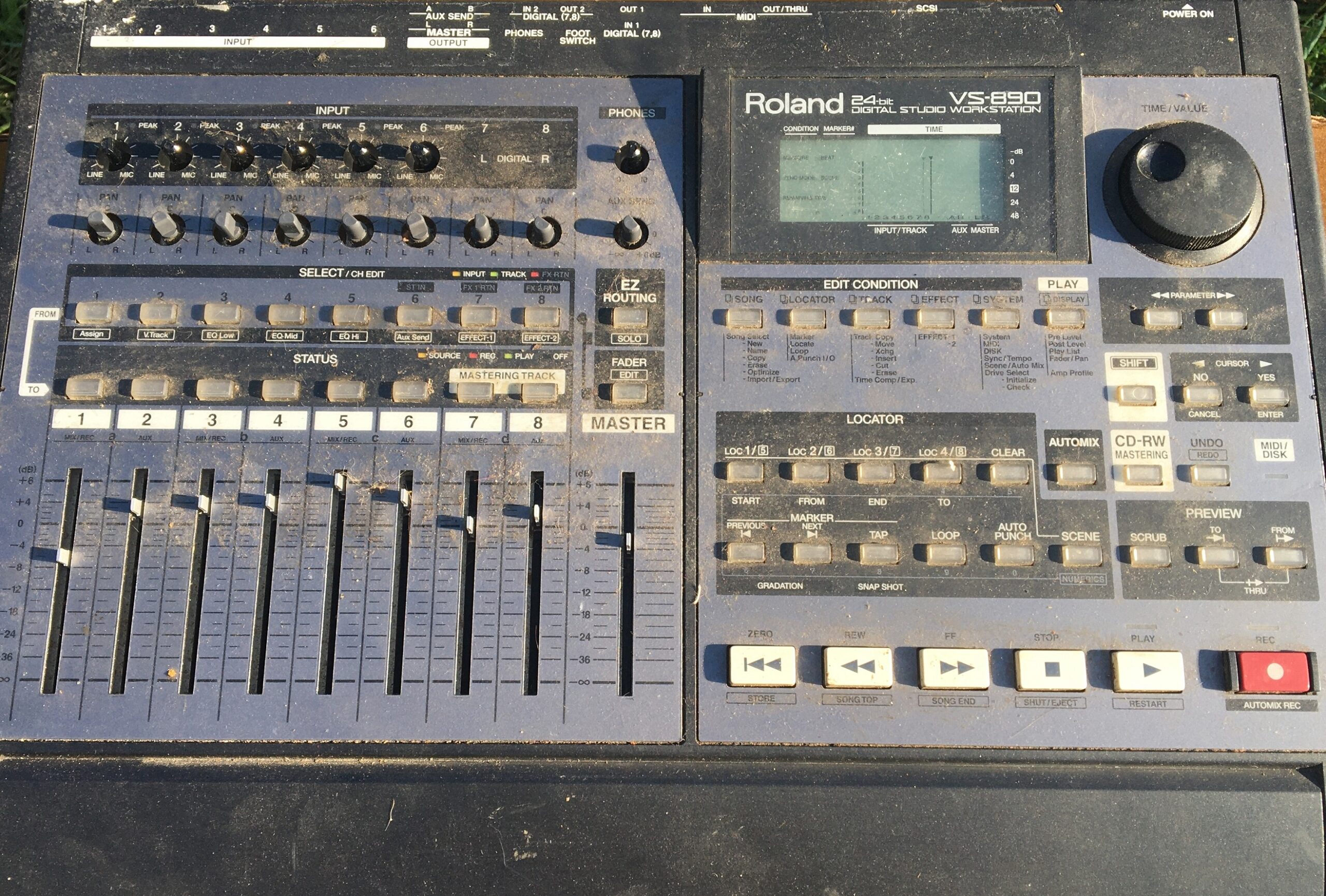
Refurbishing the Roland VS890
August 21, 2021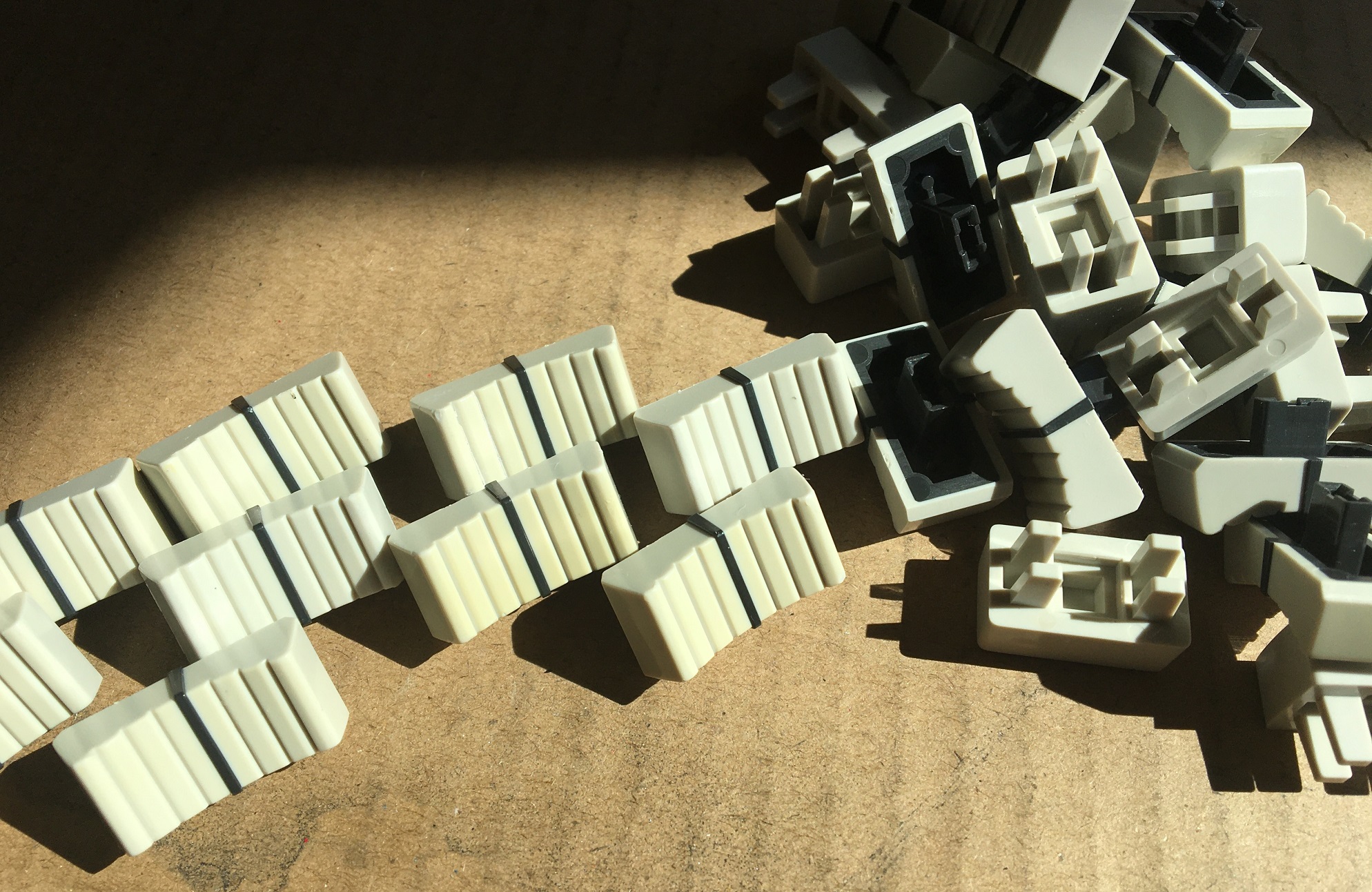
Cleaning Yellowed Knobs, Buttons, & Controls for Roland VS-890 VS-880
August 29, 2021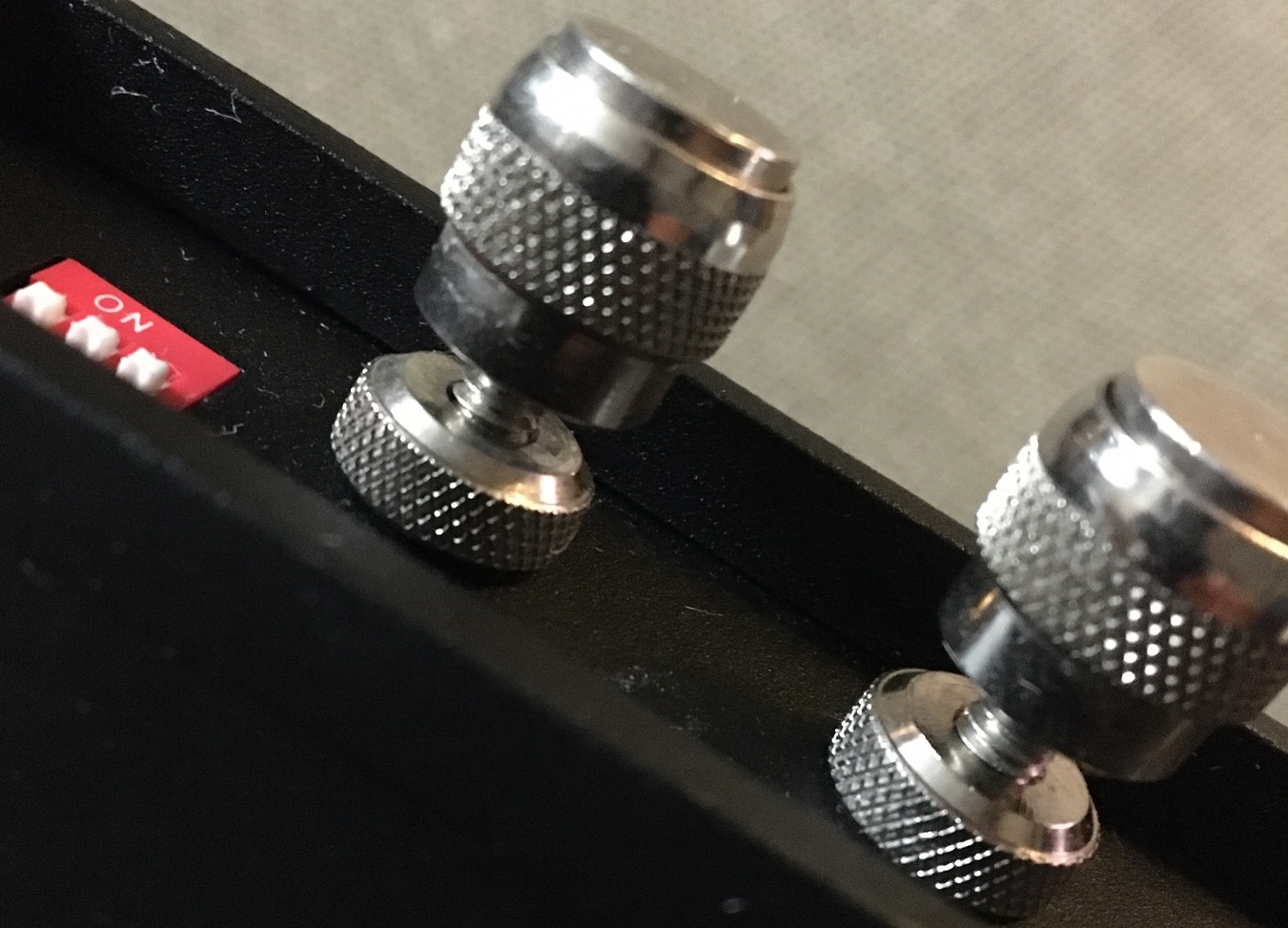
10 Comments
Terry Go
Hi There,
Glad I found your blog.
I bought a used dr-5 and found that some of drum sounds and base sounds are very low. Tried many things like factory reset but nothing worked. All the keys are good if you try other tracks and a few particular kits but all the regular base keys and kick and snare drums will produce very low and noisy sound and this is same for playing patterns. It’s so weird. Do you think it’s related to capacitor issue or something else?
I appreciate your opinion on this as I’m at the point and bite the bullet and throw this into garbage can 🙁
Terry from NJ
admin
Hi Terry,
This was a while ago, but from what I remember some of the sounds were barely audible and the rest just sounded muffled.
First off save yourself the time and do a fresh initialize reset of the machine.
1. Power on while holding both the FRET < > buttons. – “SYSTEM Init?” appears in the display.
2. Press ENTER twice.
Play with the machine and see if it worked, if it still sounds muddy or soft this recap will probably help. No need to trash it.
Thanks.
James
Can the preset buttons be molded so that a new external sound can replace the factory preset sample?
Brent a.
Got mine for cheap, output were really weak. Then i recapped it and it sounds great. One of the best machines for the price especially because of the midi, and pitch tracker. Plugged it into my piano and had great piano sounds from the dr5. What a keeper
admin
I’ve done this to a few different machines and mixers at this point, it really does bring sound back to some of these old units. Glad it worked out.
Glenn Harris
Who Fixes Dr-5 Without Losing Any Of The Music That’s Stored On It ? Please HELP 😭
Glenn Harris
My DR5 No Longer Turns On. Who Can Fix Without Losing Music Stored On It ,
admin
Glenn,
As long as the internal backup battery is still good the data should still be stored on the machine. I would suggest starting by testing your power supply to make sure that it’s still good. If that is still good, check for broken solder joints near the DC barrel jack as that seems to be common among a lot of this aging gear.
SiloSix
Thanks for the post..!
I was suspecting the hum coming out of mine to be due to old caps. I just got a 2nd one, so I have room for error enough to give it a go. The DR-5 Service Notes ( freely available on Archive.org ) spec out the following caps & the circuit diagrams are actually legible:
100uf 6.3V – x11 Electrolytic
220uf 10V – x1 Electrolytic
10uf 16V – x13 Electrolytic
33uf 16V – x1 Electrolytic
47uf 16V – x3 Electrolytic
470uf 16V – x2 Electrolytic <– power supply caps
1uf 50V – x1 Electrolytic
1uf 50V BP – x2 Electrolytic
0.015uf – x1 Polyester
0.1uf – x1 Ceramic
0.047uf – x1 Ceramic
Lastly, I've good luck gutting electronics I would otherwise would have tossed after I resusitated several mixers & such after I learned that CAPs are usually the culprit. The hardest part is usually getting the damn glue separated from the mobo. Since caps only have two pins, desoldering is normally a trivial affair.
The merely the CHORD feature anlone on these things is worth the investment.
admin
Thanks for adding that info, I will update the article to note your comment for the cap lists. Thanks.